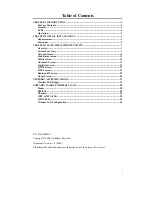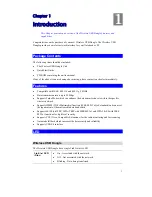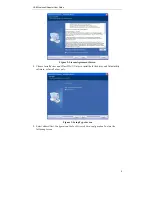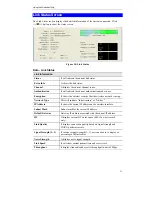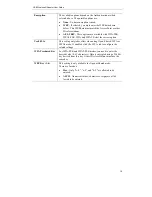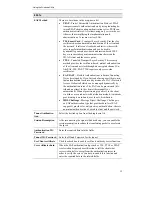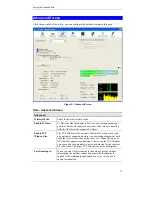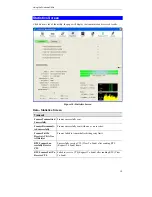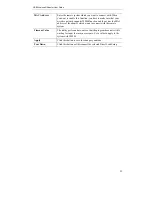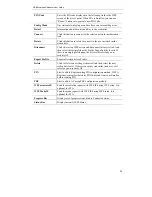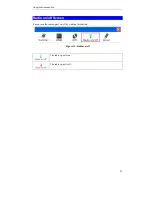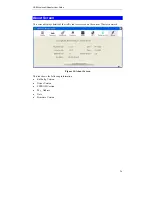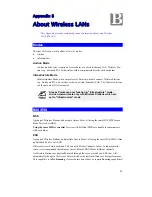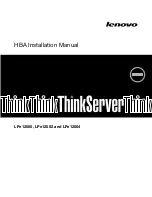
Using the Windows Utility
13
Network Type
Select the desired option:
•
Infrastructure
- Select this to connect to an Access point.
•
Ad-Hoc
- Select this if you are connecting directly to another
computer.
Tx Power
Select the Tx (transmission) power according to the real envi-
ronment.
Preamble
The preamble defines the length of the CRC (cyclic redundancy
check). Select either
Auto
or
Long Preamble
.
OK button
Click this button to save the settings and close the page.
Cancel button
The "Cancel" button will discard any data you have entered and
exit the page.
Auth./Encyp.
Authentication
You MUST select the option to match the Wireless LAN you
wish to join. The available options are:
•
Open
- Broadcast signals are not encrypted. This method can
be used only with no encryption or with WEP.
•
Shared
- Broadcast signals are encrypted using WEP. This
method can only be used with WEP.
•
LEAP
- Light Extensible Authentication Protocol is a pre-
EAP, Cisco-proprietary protocol. If selected, you have to en-
ter the identity, password and domain name of your
computer.
•
WPA
- This version of WPA requires a Radius Server on
your LAN to provide the client authentication according to
the 802.1x standard. Data transmissions are encrypted using
the WPA standard.
•
WPA-PSK
- PSK means "Pre-shared Key". You must enter
this Passphrase value; it is used for both authentication and
encryption.
•
WPA2
- This version of WPA2 requires a Radius Server on
your LAN to provide the client authentication according to
the 802.1x standard. Data transmissions are encrypted using
the WPA2 standard.
•
WPA2-PSK
- This is a further development of WPA-PSK,
and offers even greater security. You must enter this Pass-
phrase value; it is used for both authentication and
encryption.
•
WPA None
- If selected, you can only set encryption and
WPA-Preshared Key settings.

